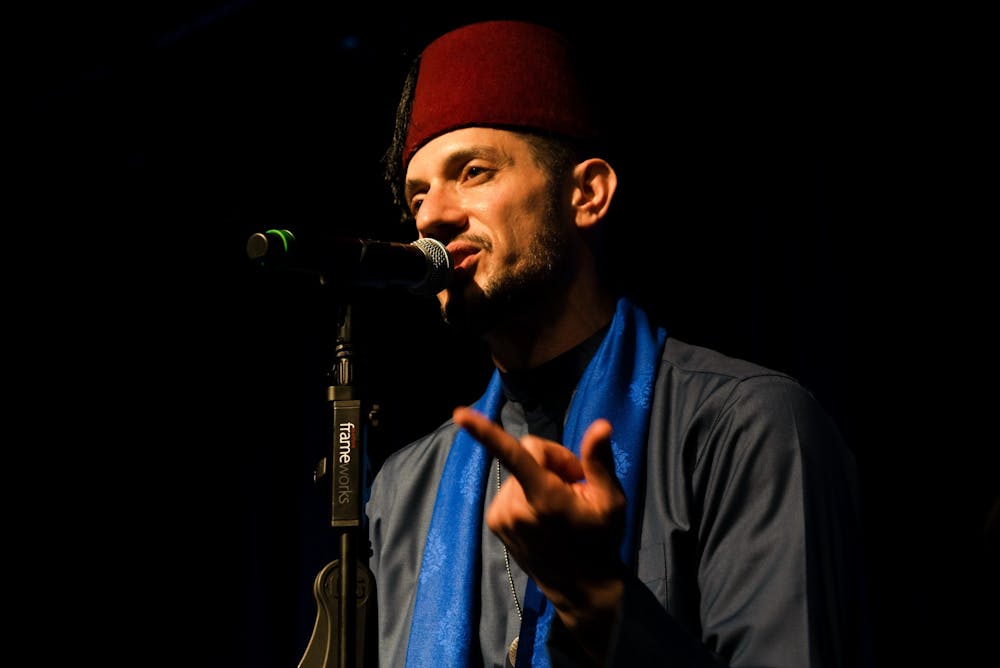Cool blue light flooded the stage as members of the crowd listened to the music of the Middle Eastern oud instrument and learned about the history of "Little Syria" at the UNCCenter for Middle East and Islamic Studies (CMEIS) 20th-anniversary celebration.
Last Friday, featured performances at the event included Black-Persian comedian Tehran Ghasri, Syrian-American hip-hop artist Omar Offendum, Palestinian-American musician Ronnie Malley and North Carolina local DJ Rang.
After 20 years, faculty members reflected on the future of CMEIS and on the achievements the center has made.
Professor Claudia Yaghoobi, the director of CMEIS as of last spring, said she developed the vision behind the celebration alongside her team. She emphasized the importance of diversity that exists within the Middle East and the necessity of considering diversity when telling Middle Eastern and Islamic stories.
"My work is focused on DEI — diversity, equity, inclusion — and the fact that hybridity is part of something that I do research," she said. "Hybridity is my own identity, I'm Iranian-Armenian-American."
Additionally, she stressed the importance of humanitarian work. For the celebration, she selected artists that not only aligned with her vision of human rights but also represented important voices for the Middle East and the world in general.
For example, Offendum has helped raise millions of dollars for different humanitarian relief organizations.
Some faculty members said none of the diversity and humanitarian goals of CMEIS would have been possible without Title VI funding from the U.S. Department of Education. These grants help universities further explore international studies and world languages.
“We have been awarded the Title VI federal funding from the U.S. Department of Education every four years since 2010,” Yaghoobi said. “And, this is the biggest achievement of the Center, almost, or the biggest award that the Center gets. Because of this grant, we are able to do so many things.”




